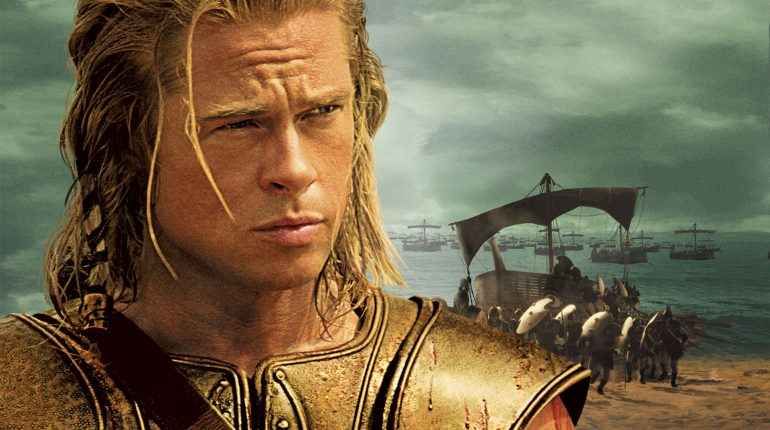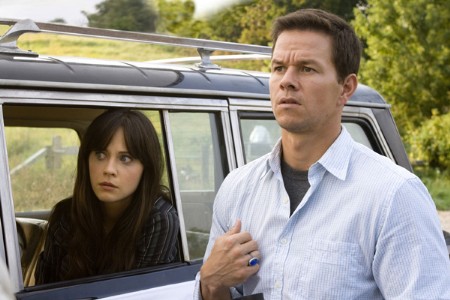
Robert Redford, the multifaceted figure who transitioned from Hollywood’s golden boy to an Oscar-winning director, impassioned liberal activist, and the revered godfather of independent cinema, passed away at the age of 89. His death, on a Tuesday morning at his beloved home at Sundance in the mountains of Utah, marked the end of a remarkable life that profoundly shaped American film and cultural discourse. Publicist Cindi Berger confirmed his passing, noting he died peacefully in his sleep, surrounded by those he cherished, though no specific cause was provided.
Redford’s career was a testament to his relentless pursuit of artistic integrity and social justice, often challenging the commercial imperatives of the industry he both excelled in and critiqued. From his captivating screen presence that defined an era to his pioneering efforts in fostering new cinematic voices, he consistently leveraged his immense star power for broader societal impact. His distaste for Hollywood’s “dumb-it-down approach” to moviemaking was a guiding principle, ensuring his projects, whether as actor or director, carried significant cultural weight.
This article delves into the significant chapters of Robert Redford’s extraordinary life, exploring the diverse facets that contributed to his enduring legacy. We will examine his early artistic inclinations, his ascent to unparalleled stardom, the pivotal collaborations that defined his acting career, his impactful foray into directing, and his transformative role in nurturing independent film. Furthermore, we will trace his unwavering dedication to environmentalism and how these distinct passions converged to create a figure whose influence extended far beyond the silver screen.

1. **Early Life and Artistic Aspirations**Charles Robert Redford Jr. was born on August 18, 1936, in Santa Monica, California, to Charles Redford and Martha Hart. His parents married three months after his birth. Early in his career, publicists for 20th Century Fox inaccurately listed his birth year as 1937, a detail that was frequently repeated over the years but has since been corrected. Redford’s early life in Van Nuys, a Los Angeles neighborhood, fostered a rebellious nature within him; he found the area “unbearably conformist and dull,” a sentiment that underscored his lifelong desire to break free from conventional bounds.
His mother’s death in 1955, when he was in his late teens, due to a blood disorder associated with the birth of twin girls who lived only a short while, left him deeply angry and disillusioned. This personal tragedy, coupled with a cynical view of life, profoundly influenced his artistic sensibilities and his later gravitation towards dark and challenging material in his work. He later recounted feeling “betrayed by God” after his mother’s passing, a sentiment that speaks to the profound impact of this early loss.
Redford attended the University of Colorado on a baseball scholarship but dropped out, citing a dislike for “bureaucracy” and developing a fondness for all-night beer parties. His artistic leanings were evident from an early age; he had been a talented illustrator since high school and, after leaving college, he traveled through Europe for over a year. During this period, he studied art at the École des Beaux-Arts in Paris, aspiring to be a painter and supporting himself by selling sidewalk sketches, all while grappling with what he described as profound depression.
Upon returning to Los Angeles, Redford undertook oil-field work before eventually settling in New York in the late 1950s. There, he continued his artistic studies at Brooklyn’s Pratt Institute and pursued acting at The American Academy of Dramatic Arts. This period of artistic exploration and self-discovery laid the groundwork for his eventual pivot to acting, where his blond good looks and innate talent would soon lead him to the Broadway stage and, eventually, to Hollywood.
Read more about: Brad Everett Young, ‘Grey’s Anatomy’ Actor and Renowned Celebrity Photographer, Dies at 46

2. **Rise to Stardom: The Definitive Leading Man of the 1970s**Robert Redford’s journey to screen stardom began in the late 1950s with his Broadway debut in “Tall Story” in 1959, followed by other stage roles including a lead in “Sunday in New York.” He transitioned to television in the early 1960s, appearing in popular shows such as “The Twilight Zone,” where he famously played Death in a 1962 episode, “Alfred Hitchcock Presents,” and “The Untouchables.” These early experiences honed his craft, preparing him for the bigger screen.
His breakthrough into mainstream cinema solidified in the late 1960s and early 1970s, establishing him as one of Hollywood’s most sought-after leading men. With his wavy blond hair, boyish grin, and an innate magnetism, Redford quickly became a pervasive image in American pop culture. Yet, he actively resisted being typecast solely as a “sex symbol,” often complaining that this glamour image could be a “real handicap” and working diligently to transcend his looks through his diverse role choices and political advocacy.
The 1970s marked Redford’s zenith as a box-office draw and critical favorite, delivering a string of iconic performances that resonated deeply with audiences. Films such as “The Candidate” (1972), a satirical look at American politics, “All the President’s Men” (1976), chronicling the Watergate investigation, and “The Way We Were” (1973), a classic romance, cemented his status. These roles showcased his ability to portray complex characters, from an idealistic politician to a tenacious journalist, all while maintaining his unique screen presence.
Despite his widespread appeal, Redford’s path was not without its artistic challenges. His portrayal of Jay Gatsby in the 1974 adaptation of “The Great Gatsby” received considerable critical disdain, with some critics, like Pauline Kael, suggesting he “couldn’t transcend his immaculate self-absorption.” However, even in the face of such criticism, the film was a box-office hit, underscoring his undeniable draw. Redford remained committed to selecting roles that challenged both himself and audience expectations, even if it meant risking commercial or critical success.
Read more about: Robert Mitchum: The Unflinching Gaze of a Noir Icon’s Life and Legacy
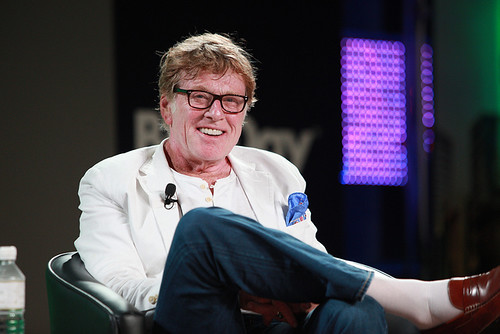
3. **Iconic Screen Partnerships: Chemistry That Defined an Era**Robert Redford possessed an uncanny knack for finding the perfect scene partner, forming legendary on-screen duos that captivated audiences and often defined entire films. His most celebrated collaboration was with his old friend and fellow activist, Paul Newman. Their real-life warm, teasing relationship effortlessly translated to the screen, creating a dynamic that was both authentic and endlessly entertaining. Their first pairing in 1969’s “Butch Cassidy and the Sundance Kid” was a box-office smash, with Redford playing the wily outlaw opposite Newman’s Butch Cassidy, a role that gave Redford’s Sundance Institute its enduring name.
The undeniable chemistry between Redford and Newman was so potent that they reunited with the same director, George Roy Hill, for 1973’s “The Sting.” This Depression-era caper about grifters was a critical and commercial triumph, earning Redford his first and only Oscar nomination as an actor for his role as the young con artist. Critics like Vincent Canby observed how they looked “like a couple of guys in old Arrow shirt ads,” perfectly embodying the film’s stylish charm. Their collaborations are often cited as prime examples of screen pairings that elevate a film beyond its plot, becoming cultural touchstones.
Beyond Newman, Redford also forged memorable partnerships with some of Hollywood’s most commanding actresses. His work with Jane Fonda, starting with the film version of Neil Simon’s “Barefoot in the Park” (1967), showcased his romantic lead capabilities. Their on-screen rapport extended to later films, including “The Chase” (1966) and the twilight-years romance “Our Souls at Night” (2017), demonstrating a remarkable enduring chemistry over decades. These pairings highlighted Redford’s ability to be both a strong male lead and a supportive counterpoint to powerful female performances.
Another iconic pairing was with Barbra Streisand in “The Way We Were” (1973), a romance that became a classic. The critic Pauline Kael noted Redford was “never so radiantly glamorous as when we saw him through Barbra Streisand’s infatuated eyes,” illustrating how his presence could be amplified by a compelling co-star. Similarly, his work with Meryl Streep in 1985’s best picture champion “Out of Africa” further cemented his reputation as an actor who could hold his own alongside the industry’s most respected talents, consistently delivering nuanced performances that benefited from strong partnerships.
Read more about: From Teen Idol to Silver Fox: Christopher Atkins’ Unforgettable Journey of Hollywood Heights, Personal Battles, and Finding Peace
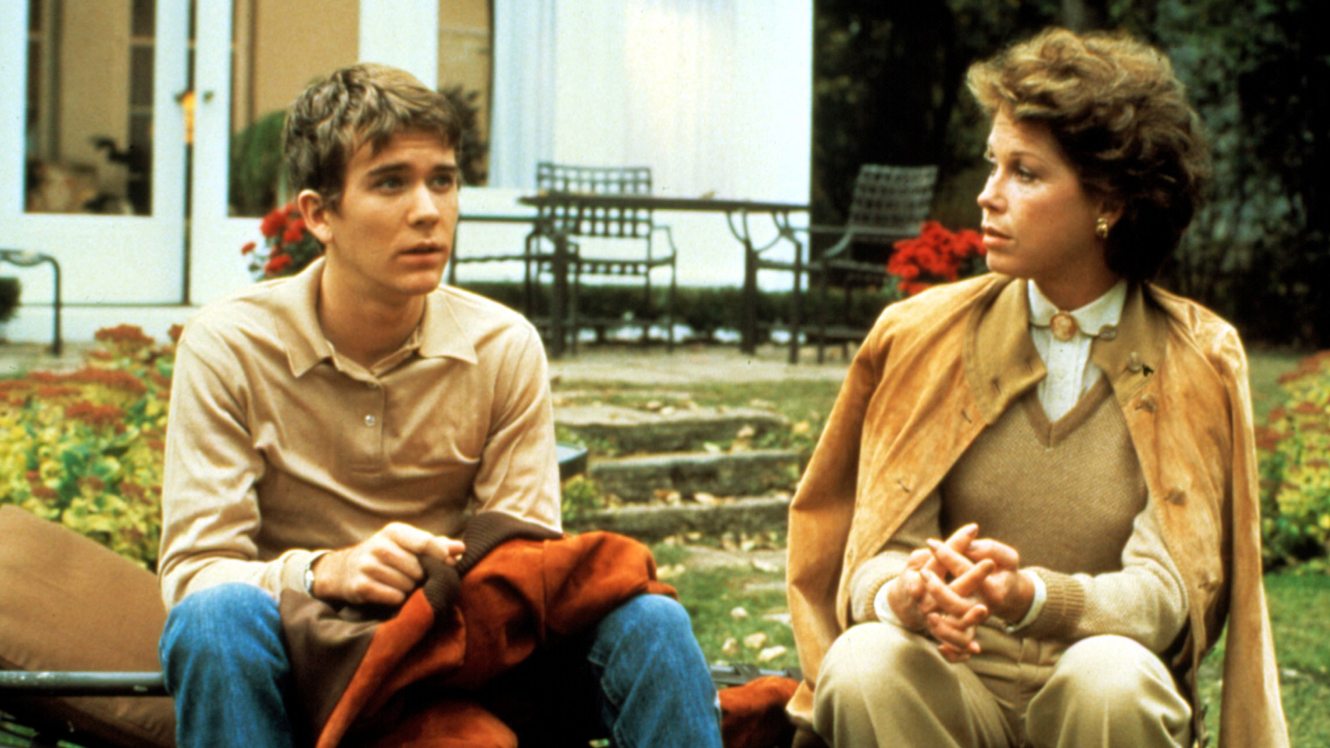
4. **Oscar-Winning Director: “Ordinary People” and Beyond**In his 40s, Robert Redford boldly branched into directing, demonstrating a profound understanding of storytelling and human emotion that extended beyond his acting prowess. His directorial debut, “Ordinary People” (1980), was an immediate critical and commercial success, earning him an Academy Award for Best Director. The film, a poignant drama about an upper-middle-class family’s disintegration after a son’s death, resonated deeply, not least because it subtly reflected the repressed grief and emotional silence Redford experienced in his own family after his mother’s death.
“Ordinary People” went on to win three other Oscars, including Best Picture, beating out Martin Scorsese’s acclaimed “Raging Bull.” Redford was widely praised for his insightful casting choices, particularly giving Mary Tyler Moore an unexpectedly serious role, and for his even-handed treatment of the characters. Roger Ebert lauded his approach, stating it set “the film apart from the sophisticated suburban soap opera it could easily have become,” highlighting Redford’s directorial maturity and sensitivity.
Redford’s commitment to exploring complex narratives continued through his subsequent directorial efforts, even when they did not achieve the same level of mainstream success. His next film, “The Milagro Beanfield War” (1988), a comedic drama about a New Mexican farmer struggling for water rights, was a commercial flop, but he stubbornly refused to pursue less esoteric material. This decision underscored his dedication to films that carried cultural weight and challenged conventional storytelling, rather than bowing to commercial pressures.
He continued to direct and produce thought-provoking films, including “A River Runs Through It” (1992), a spare period drama about Montana fly fishermen grappling with existential questions, and “Quiz Show” (1994), which delved into a notorious 1950s television scandal. “Quiz Show” garnered four Oscar nominations, including best picture and best director, reaffirming his standing as a respected filmmaker. In 2002, Redford received an honorary Oscar, a testament to his multifaceted contributions as an “actor, director, producer, creator of Sundance, inspiration to independent and innovative filmmakers everywhere.”
Read more about: Robert Redford: A Life in Pictures – Tracing the Iconic Journey of Hollywood’s Reluctant Star, Director, and Environmental Champion
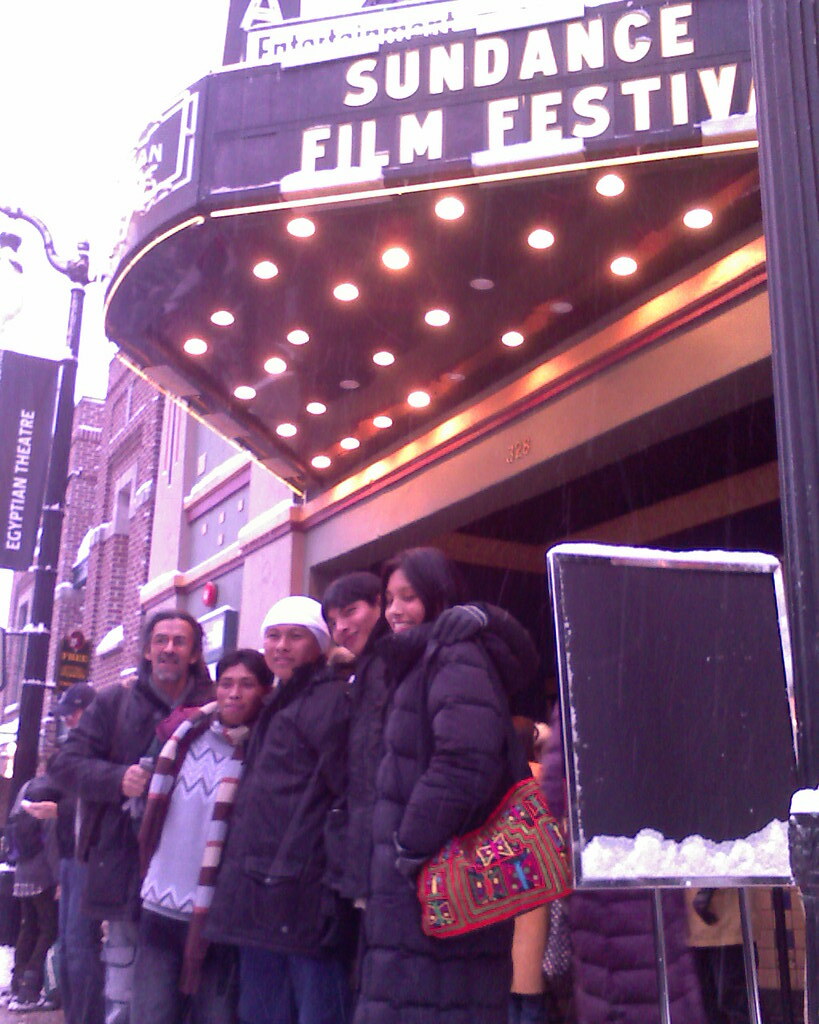
5. **Champion of Independent Cinema: The Birth of the Sundance Institute**Perhaps Robert Redford’s most profound cultural impact extended beyond his individual films into the realm of institution-building. Recognizing that Hollywood was growing more cautious and controlling in the 1970s, Redford envisioned a platform to recapture the creative spirit of earlier filmmaking. In 1981, he founded the Sundance Institute, a nonprofit organization dedicated to nurturing new talent and providing a training ground for independent artists away from the commercial pressures of the mainstream film industry.
Redford’s vision for Sundance was deeply rooted in his personal philosophy of independence. “For me, the word to be underscored is ‘independence,’” he told The Associated Press in 2018. “I’ve always believed in that word. That’s what led to me eventually wanting to create a category that supported independent artists who weren’t given a chance to be heard.” He saw a void where stories outside the mainstream were not being told and committed his energies to giving those voices a chance.
The Institute’s establishment was a direct response to Redford’s observations about the industry’s control by mainstream entities. He believed there were vital stories that needed telling, and that a dedicated space was necessary to allow these narratives to flourish. This pioneering effort provided vital resources, mentorship, and a creative sanctuary for filmmakers, writers, and artists to develop their craft and projects without the immediate demands of commercial viability.
Located in Utah, the place he loved, the Sundance Institute became the foundation for a movement that would transform American cinema. It cultivated fresh cinematic voices and offered a crucial alternative to the Hollywood studio system. This initiative was not merely about making movies; it was about fostering an ecosystem where artistic integrity, diverse perspectives, and challenging narratives could thrive, ultimately redefining what independent film could achieve and its place in global culture.

6. **Environmental Activism: A Lifelong Commitment to Conservation**Robert Redford’s commitment to environmental advocacy was as integral to his identity as his celebrated film career. Inspired in part by witnessing the transformation of Los Angeles into a city of smog and freeways, his affinity for the outdoors, often captured beautifully in films like “A River Runs Through It,” fueled decades of tireless efforts to protect natural landscapes and advocate for sustainable policies. He consistently used his considerable public platform to draw attention to pressing environmental issues.
For five decades, Redford served as a trustee of the Natural Resources Defense Council (NRDC), demonstrating a long-term dedication to conservation that went beyond fleeting celebrity endorsements. His activities spanned a wide range, from lobbying for crucial legislation such as the Clean Air Act and Clean Water Act to actively pushing for land conservation efforts in his beloved Utah. He was an archetypal actor-as-environmentalist, influencing figures like Leonardo DiCaprio and Mark Ruffalo.
One notable instance of his activism occurred in 1976 when he leveraged his clout to help block the construction of a coal-fired power plant on Utah’s scenic Kaiparowits plateau. This project, championed by business leaders for job creation, faced Redford’s fierce opposition, which included a 36-page photo spread in National Geographic magazine featuring himself on horseback. His efforts, though sparking backlash and being labeled a “liberal carpetbagger” by some, ultimately contributed to the plant’s cancellation, showcasing the tangible impact of his advocacy.
Redford preferred not to be called an “activist,” finding the label too severe, but his actions undeniably fit the description. In 1970, he successfully campaigned against a proposed six-lane highway in a Utah canyon. Later, in the late 1970s, he even sought and won the office of commissioner of the Provo Canyon sewer district to protect the area from development and pollution, though he quickly encountered bureaucracy that reinforced his belief in independent activism and storytelling as more effective tools for change. In 2015, he addressed the United Nations, emphasizing the urgent need to address climate change, underscoring his global reach in this vital cause.

7. **The Evolution and Impact of the Sundance Film Festival**Building upon the foundation of the Sundance Institute, Robert Redford took over a struggling film festival in Utah in 1984 and later renamed it after the institute. This pivotal move transformed the festival, initially based in Park City, Utah, into a preeminent global showcase and a bustling marketplace for American films produced outside the conventional Hollywood studio system. Redford’s vision created a crucial alternative for filmmakers.
Sundance quickly became synonymous with creative cutting-edge cinema, serving as a launchpad for a generation of previously unknown filmmakers. Talents such as Quentin Tarantino, Steven Soderbergh, Paul Thomas Anderson, and Darren Aronofsky all unveiled their early works at the festival, using it as their first major platform. The festival’s ability to discover and promote diverse voices fundamentally reshaped the landscape of independent film.
As Sundance’s prominence soared, attracting over 85,000 attendees by 2025 from just a few hundred in its early days, it also drew the commercial attention that Redford had sought to escape. Buyers swarmed in search of potential hits, and celebrities overran the town each winter. Redford openly voiced his frustration with this commercial whirlwind, lamenting the presence of ‘ambush marketers — the vodka brands and the gift-bag people and the Paris Hiltons —’ who he felt had nothing to do with the festival’s artistic mission.
Despite the commercial pressures, Redford maintained that the festival’s core policies and commitment to diversity remained unchanged. He noted that the diversity fostered by Sundance had ironically become commercial, leading Hollywood to ‘grab them.’ This dynamic demonstrated the significant influence independent films, once championed by Sundance, began to exert on the mainstream industry.
In a testament to its continuous evolution and growth, organizers announced that by 2025, the festival had outgrown Park City and approved its relocation to Boulder, Colorado, starting in 2027. Redford, having attended the University of Colorado Boulder, supported this change, stating that ‘change is inevitable, we must always evolve and grow, which has been at the core of our survival,’ underscoring the enduring spirit of the institution he founded.
Read more about: PopSugar’s Pick: The 2025 Emmys Red Carpet — Unforgettable Style Statements, We’re Breaking Down Every Iconic Look

8. **A Diverse and Challenging Filmography Beyond the 70s**After his dominant run in the 1970s, Robert Redford’s film roles became more sporadic as he increasingly concentrated on his directorial work and his transformative role as the patriarch of the independent film movement through the Sundance Institute. Yet, he continued to engage with mainstream Hollywood, albeit selectively, often choosing projects that resonated with his artistic and social sensibilities.
His post-1970s acting career included notable performances, such as his role in the best picture champion ‘Out of Africa’ (1985), which further cemented his status as a leading man capable of holding his own alongside revered talents like Meryl Streep. He also teamed with Brad Pitt, an actor often considered his heir apparent, in 2001’s spy thriller ‘Spy Game,’ showcasing his continued appeal in commercial productions.
Redford’s filmography during this period was marked by a willingness to take risks, even if it sometimes led to less commercial success. While films like ‘Havana,’ ‘The Last Castle,’ and ‘An Unfinished Life’ did not always fare well at the box office, they demonstrated his commitment to diverse material. Conversely, scrappy independent films emerging from Sundance, such as ‘The Blair Witch Project’ and ‘Napoleon Dynamite,’ sometimes achieved greater commercial and critical success than some of his own starring vehicles.
His acting choices often reflected his deeper concerns, including a recurring engagement with political narratives. Following his satirical portrayal of an idealistic U.S. senatorial candidate in ‘The Candidate’ (1972) and his iconic role as Bob Woodward in ‘All the President’s Men’ (1976), he revisited political themes in 2007 with ‘Lions for Lambs,’ a saga exploring the war on terrorism in Afghanistan where he both acted and directed.
Notably, his biggest ticket seller as an actor, excluding his late-career Marvel supporting roles, was the 1993 morality tale ‘Indecent Proposal.’ While the film grossed a significant $267 million, Redford later expressed regret, stating that the psychological and ethical questions that initially drew him to the project were ‘flattened in the sensationalistic final version,’ a sentiment that spoke to his persistent pursuit of substantive storytelling over pure commercialism.
Read more about: Behind the Lens: 6 Visionary Directors Who Conquered Career Obstacles to Craft Cinematic Masterpieces
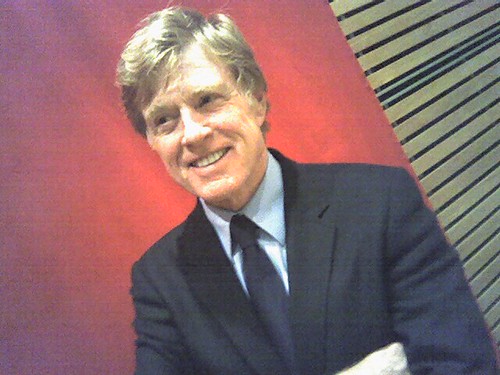
9. **Later Career Roles and ‘Farewell’ Performances**As Robert Redford entered his later years, his filmography continued to demonstrate his artistic adventurousness, culminating in a series of poignant roles that showcased his enduring talent. In 2013, he delivered one of the most critically acclaimed performances of his career in ‘All Is Lost,’ a minimalist drama where he was the film’s sole performer, portraying a shipwrecked sailor struggling for survival at sea. This physically demanding role, requiring long days in a water tank at age 70, garnered him widespread praise.
Despite the universal acclaim for ‘All Is Lost,’ Redford was notably snubbed by Oscar voters, a disappointment he openly attributed to the film’s distributor, Roadside Attractions. He criticized their perceived lack of a mainstream campaign, stating, ‘They didn’t want to spend the money, or they were incapable,’ highlighting his direct and candid approach to the industry he knew so well.
In his twilight years, Redford reunited with a beloved screen partner, Jane Fonda, for the 2017 romance ‘Our Souls at Night.’ This film, which explored themes of companionship and vulnerability in old age, beautifully rekindled the chemistry they had shared across decades, from ‘Barefoot in the Park’ to ‘The Chase,’ demonstrating their remarkable enduring rapport.
His final acting role came in 2018 with ‘The Old Man and the Gun,’ a drama based on the true story of a charming septuagenarian bank robber. Redford heralded this film as his ‘farewell movie,’ an announcement that marked a significant moment for Hollywood and his legion of fans. He reflected on his long career, expressing satisfaction and acknowledging that it was ‘maybe time to move toward retirement and spend more time with my wife and family.’
His decision to step away from acting was also rooted in personal circumstances, including increasing immobility. Decades of vigorous physical activity, particularly riding horses and playing tennis, had taken a toll on his 5-foot-10 frame, making the demands of a physically taxing acting career more challenging. This candid explanation offered a glimpse into the personal cost of a lifetime spent in the demanding world of cinema.
Read more about: Remember Them? 14 Once-Famous Actors You Might Be Shocked to Realize You’ve Forgotten!

10. **Principled Stance Against Hollywood Commercialism**Throughout his illustrious career, Robert Redford maintained a steadfast and principled stance against what he often described as Hollywood’s ‘dumb-it-down approach’ to moviemaking. This deeply ingrained distaste for superficiality was a defining characteristic, guiding his choice of projects and his broader contributions to the film world. He consistently demanded that his films, whether as an actor or director, carry significant cultural weight and intellectual substance.
This conviction was evident early in his directing career; following the commercial disappointment of ‘The Milagro Beanfield War’ in 1988, a comedic drama that explored esoteric themes, Redford stubbornly refused to pursue less challenging or more mainstream material. This decision underscored his unwavering dedication to artistic integrity over commercial imperatives, prioritizing meaningful storytelling above box-office returns.
His commitment to fostering independent cinema through the Sundance Institute was a direct manifestation of this philosophy. He founded Sundance precisely to create a platform for artists to tell stories that ‘weren’t having a chance to be told’ within the commercially driven mainstream industry. Redford envisioned a space where creative freedom could flourish, unencumbered by the pressures of marketability.
However, the very success of Sundance eventually brought it into a complex relationship with commercialism. As independent films gained popularity and attracted Hollywood buyers, the festival itself became a bustling marketplace often ‘overrun’ by corporate branding and celebrity culture. Redford voiced his dismay, observing that ‘the diversity has become commercial’ and lamenting how ‘Hollywood grabs your films’ and declares them ‘gone Hollywood.’
Redford’s lifelong ‘outlaw sensibility,’ as he described it, was also a driving force behind his resistance to conformity and commercialism. From childhood, he was ‘always trying to break free of the bounds’ he was stuck with, a rebellious streak that fueled his artistic independence and his continuous efforts to challenge established norms, both on screen and behind the scenes. This deep-seated belief in independence defined his entire professional ethos.

11. **Personal Life, Family, and Enduring Grief**Beyond the glare of the silver screen, Robert Redford’s personal life was marked by profound joys and significant sorrows, often mirroring the complex emotional landscapes he explored in his directorial work. He was married twice, first to Lola Van Wagenen in 1958, a relationship that eventually ended in divorce in 1985. Later, in 2009, he married Sibylle Szaggars, a German artist he had met at the Sundance Institute.
With Lola Van Wagenen, Redford had four children: Shauna, Amy, David James (known as Jamie), and Scott Anthony. Tragically, he experienced the immense pain of losing two of his children. Scott Anthony died in infancy in 1959 from sudden infant death syndrome at just 2½ months old, a devastating loss that left an indelible mark on him and his family.
Decades later, in 2020, his son James Redford, a talented activist and filmmaker, passed away at the age of 58 due to cancer of the bile ducts. Jamie’s life had also been marked by health struggles, including two liver transplants that he underwent just as his father was directing ‘Quiz Show,’ showcasing the deep resilience within the Redford family in the face of immense adversity.
Redford’s own youth was shaped by a significant personal tragedy: his mother, Martha Hart, died in 1955 when he was in his late teens, due to a blood disorder associated with the birth of twin girls who lived only a short while. This loss left him ‘deeply angry and disillusioned,’ leading him to feel ‘betrayed by God.’ The repressed grief and emotional silence he experienced in his own family after his mother’s death profoundly influenced his artistic sensibilities, particularly his poignant directorial debut, ‘Ordinary People,’ which explored similar themes of familial disintegration and sorrow.
The Redford family also endured other traumas, including an incident in 1983 where his daughter Shauna’s boyfriend was shot dead in Colorado. Shauna herself later survived a gruesome car accident that left her vehicle submerged with her inside. These deeply personal challenges, often kept private, contributed to Redford’s well-known reclusive tendencies, reinforcing his desire for the peace and seclusion offered by his Utah home.
Read more about: Beyond the Starlight: Robert Redford’s Untold Heartbreak and the Women Who Shaped His Life
12. **A Multifaceted Legacy: Actor, Director, Impresario, Activist**Robert Redford leaves behind a towering, multifaceted legacy, defined by his extraordinary contributions across various domains of American culture. He was not merely a Hollywood star, but a genuine screen idol whose blond good looks and innate magnetism captivated audiences for decades, making him a pervasive image in American pop culture. Yet, he consistently defied easy categorization, leveraging his immense star power for broader societal impact.
As an Oscar-winning director, Redford demonstrated a profound understanding of human emotion and storytelling, earning critical acclaim and prestigious awards for films that explored complex human conditions. His commitment to substantive narratives, often challenging the commercial imperatives of the industry, ensured his projects carried significant cultural weight, making serious topics resonate with the masses.
Perhaps his most enduring and transformative impact was as the visionary impresario behind the Sundance Institute and Film Festival. Recognizing the need to nurture independent voices away from mainstream pressures, he created an unparalleled platform that redefined American cinema. Sundance became a crucible for new talent, fundamentally altering the landscape of filmmaking and fostering a global movement for independent artistic expression.
Beyond his cinematic achievements, Redford was an ardent and lifelong environmental activist. For five decades, he championed conservation, using his public platform to advocate for critical legislation and protect natural landscapes, influencing a generation of stars to take up similar causes. He embodied the archetype of the actor-as-environmentalist, tirelessly working to preserve the planet he loved.
In 2002, the Academy recognized his diverse contributions with an honorary Oscar, citing him as ‘actor, director, producer, creator of Sundance, inspiration to independent and innovative filmmakers everywhere.’ This accolade perfectly encapsulates the breadth and depth of his influence, celebrating a man who was always pushing and questioning, driven by a ‘hard eye’ and an ‘outlaw sensibility’ that sought to break free of bounds and make a difference.
Read more about: Robert Redford: A Life in Pictures – Tracing the Iconic Journey of Hollywood’s Reluctant Star, Director, and Environmental Champion
Robert Redford’s life was a testament to the power of artistic integrity, social consciousness, and a relentless pursuit of independence. From his captivating screen presence to his pioneering efforts in nurturing new cinematic voices and his unwavering dedication to environmentalism, he carved out a legacy that transcends entertainment. His influence will continue to resonate, inspiring future generations of artists and activists to use their platforms to tell meaningful stories and advocate for a better world. He was a force of nature, an American original whose impact will be felt for generations to come.


